We went out of town for a couple of days so I had a relative care for my various flocks. All was going well until the one day I checked in with him. “Well, everything is good except you had a pheasant die,” he said. While one pheasant in the grand scheme of things may not seem like a big deal, it was what I feared would be the telling sign of things to come.
With several busy days leading up to our travels, it burned in my mind that I needed to get my pheasants into their permanent coop. They were coming up on five weeks old and certainly were starting to grow where it was noticeable. It sure seemed like pheasants 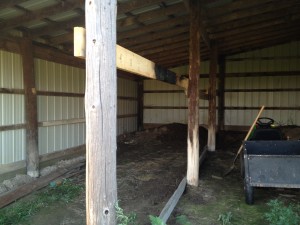
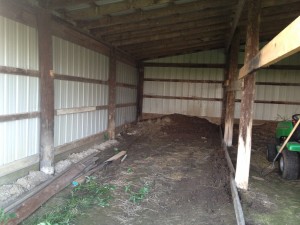
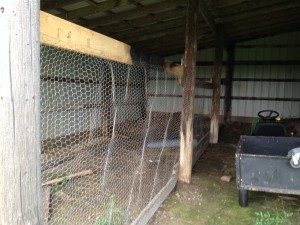
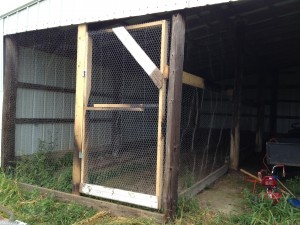
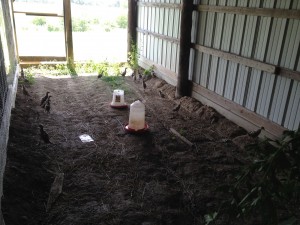 grow at a quicker rate than a typical chicken does! The tail feathers of many were starting to grow out long and pointy. On a few occasions during feeding time, one or two brave pheasants would hop onto the feeder or water and try to take flight out of the brooder. It was a struggle for them but they were now reaching the top of these 24″ sidewalls.
grow at a quicker rate than a typical chicken does! The tail feathers of many were starting to grow out long and pointy. On a few occasions during feeding time, one or two brave pheasants would hop onto the feeder or water and try to take flight out of the brooder. It was a struggle for them but they were now reaching the top of these 24″ sidewalls.
There were several indications leading up to the point where I knew it was time to get them into a permanent coop. For starters, the amount of waste and the noticeable odor was continually increasing. It seemed I could not keep the bottom of the brooder dry no matter how much straw I kept putting down. While I have a fan blowing in the coop to keep the air circulating, the odor continued to be noticeable. Feed and water were both being consumed at a noticeably increasing rate as well. I was adding much more feed and the usual refilling of the water every other day or so now transitioned into every day. And of course, with the news of the dead pheasant, I knew the crowding was becoming an issue.
As soon as we got home I started again on the lean to that would serve as their new coop. Things were buzzing as I got started framing up the section they would reside in. By that I mean literally buzzing. I had several nests of yellow jackets swarming around me as I constructed the pen. Once I got side rails attached to the beams I went to grab the chicken wire that I had on hand that would contain the pheasants to the pen. While I was in rush mode to get this pen done, I wish I would have paid more attention to some details. I constructed the frame to accommodate a 60″ wide chicken wire. This would have been great if I in fact had 60″ wide chicken wire – unfortunately I had 48″ wide chicken wire. I could have sworn that I had 60″ wide from a previous measurement but alas, the frame came down and was rebuilt.
Moving the pheasants from the brooder to the pen was interesting. I was amazed at how tame some of the pheasants seemed as I reached in to pick them up and put them in the carrier I had on hand. Others wanted nothing to do with me and practiced their upward flight skills to get away from me. I have noticed that pheasants seem to be very….shy I guess is the word I would use. Once I opened the gate from the carrier I expected some kind of majestic pheasant flight out of the carrier into the new pen. On the contrary, the pheasants wanted nothing to do with the new pen and stayed in the back of the carrier. I had to literally pull them out of the carrier. Once in the new pen, they immediately ran for the darkest place in the new pen which was a corner surrounded by a high dirt mound.
As I look back and have watched the pheasants for a couple of days now, I wish I would have thought more about the cover or growth the pheasants would need to hide in. The pen was covered on three sides with basically a dirt floor. I knew they liked cover to hide in so I uprooted and replanted several large weed/trees that were around the farm. The pheasants stay in the brush/cover and seldom are seen walking in plain view. If I had to do it over again, I would have grown corn or some other type of cover for them to flourish and hide in. Right now, the solution I have used is to shovel up large areas of my over-grown garden and replant those patches in the pheasant pen. They seem to like the cover.
They are adjusting to their pen, however, there is still more adjusting needed. I have noticed that they have eaten very little since getting into the new pen. I’m assuming they need even more cover brought in so they get a little more comfortable in the new setting. I know it doesn’t help that our two golden retrievers are continually visiting the pen and “welcoming” them to their new home.
For those of you who have seen some of my past blogs, you know that I have had some past battles with a fox on the property. I have scoured the new pen and have tried to tighten up all instances where I would assume a fox would try to get into the pen. I’m hoping if it does happen that the pheasants will be able to get a way a little better than my unfortunate chickens. I guess we will tackle that problem if it presents itself. I did see another young fox pup just last night on the road about a half mile from the farm. It was not afraid of me at all as it stood on the side of the road. I rolled my window down and had a brief yet stern talk with him assuring that I would be the one to end his life and any member of his family if they decided to frequent our farm again. I’m not sure if he heard me well but it sure did feel good to let him know.
I can’t wait to start seeing the male feathers come in on the pheasants. Right now the pheasants look like a typical bird really. Nothing fancy, nothing special. Some of the pheasants have found that they can not fly through chicken wire and one has succumbed to what looked like a wing injury. As I expand our pheasant flock, if we do, I think netting will be the better route to go given what I have seen with them flying into the chicken wire.
I recently updated our Chinese Ringneck page with a video of the birds at about 4 weeks old. You can see that video by clicking here!

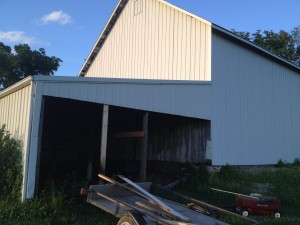
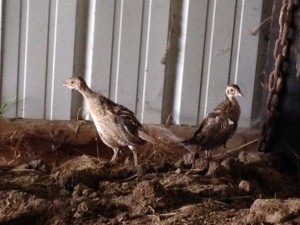
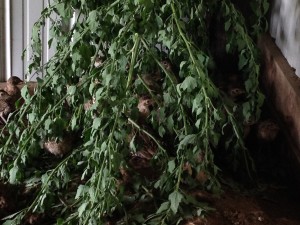
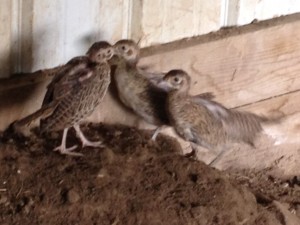
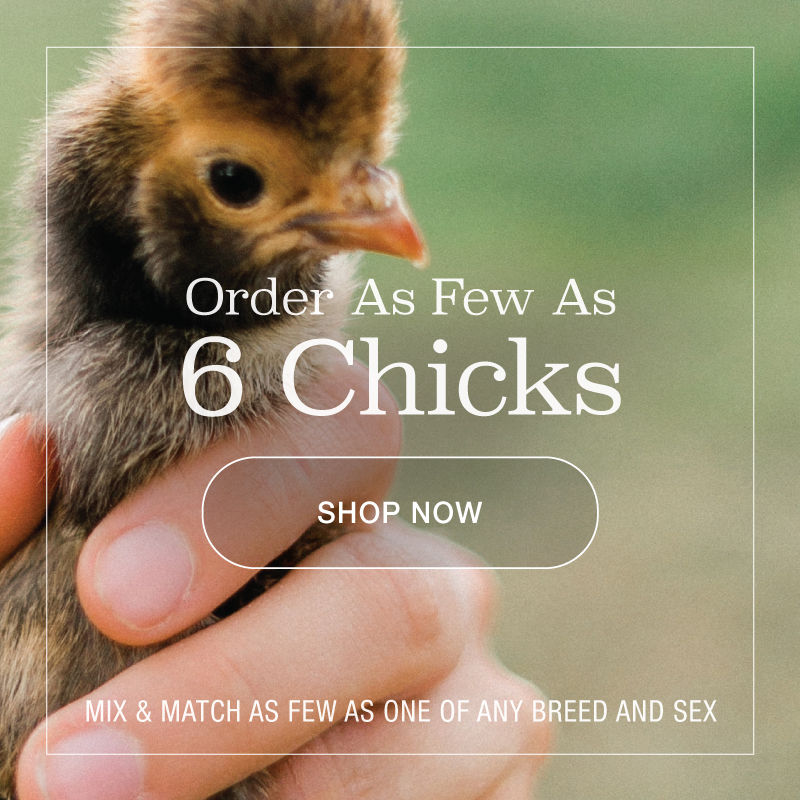

I raised pheasants that I got from murray mcmurray, try putting some perches a couple feet up they like that, also I used to put some alfalfa hay in the pen, not only do they eat it they will scratch in it, try putting a couple pieces of ply wood leaning on the wall they will like that to hide in, keep an eye out when the cocks start to get bigger, when the weather changes sometimes they will fight and will not stop till one is dead, Milo is a good feed to let grow in the pens it grows like a weed or sorgum. whenthy get older and the hens start laying, try this– take a 5 gallon bucket with the cover on, cut a round hole in the side about 6-7 inches, about 3-4 inches from bottom, put a couple inches of sand in te bottom with some straw inside, put the bucket in a corner with the hole kind of facing the wall but leave enough room so the hen can get in, then cover the bucket with some bush and you will find that the hens will go in and lay eggs ans some will even set them. good luck, I loved it when I had all my pheasants, I used to release them into the public game management area’s to help the populations, of course I worked with the DLNR, but all in all it was great, my favorite thing was in the evening one cock would crow and pop his wings then all of them would do it, music to my ears, now when I hear one in the wild it reminds me of that…
Aloha
Mikey
owner— Rocket Game Bird Farm for 20 years. enjoy